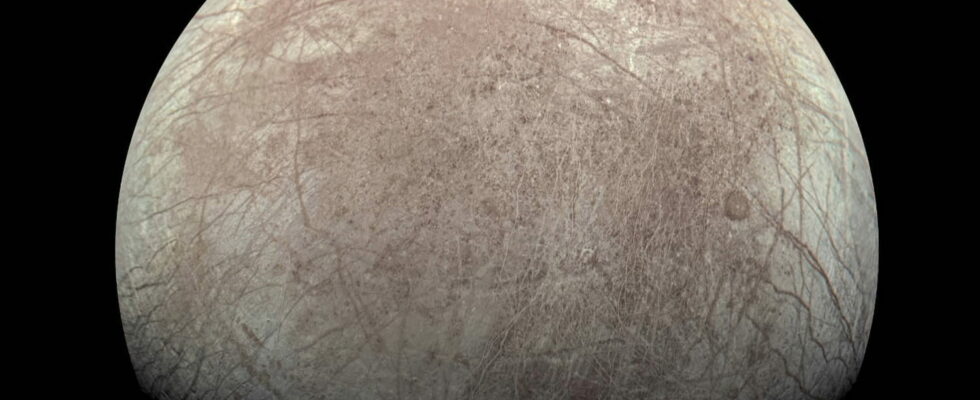New images of Jupiter’s moon have allowed scientists to make an incredible discovery.
The universe is still full of mysteries. Images from satellites can tell us more about what is happening in space. The Juno space probe, which is in orbit around Jupiter, has revealed images of the planet’s moon Europa. One detail particularly attracted the attention of scientists.
Europa is slightly smaller than Earth’s Moon. Its surface is composed of ice, as hard as granite. The surface temperature is estimated at -183 degrees. Hidden underground is a gigantic ocean made up of salt water, twice as large as all the oceans on Earth combined.
In September 2022, the Juno probe flew past Jupiter’s icy moon. The results were eventually published in the Planetary Science Journal. The black and white image shows a terrain of chaos, strewn with hillocks and ridges, particularly in one area. It was named “Platypus”, or “the Platypus” and measures 37km by 67km. This surface is distinguished from the rest of the frozen crust by its red-brown color. It would be one of the key elements of this moon of Jupiter. From the images, scientists have, in fact, estimated that Platypus could represent the place where water from the hidden ocean rises. The pits there are also believed to be associated with the movement of the ice crust over the ocean.

The captured images also reveal that the icy crusts of the moon’s north and south poles are no longer where they were before. This supports the theory that Europa’s outer ice shell moves and floats on the interior ocean. 50 kilometers above this area is a double spotted ridge. This could correspond to deposits from plumes of salt water rising to the surface from the internal ocean. The presence of a hidden ocean therefore seems to be confirmed.
Such a presence of water raises the question of life on this moon of Jupiter. However, data from the Juno orbiter also recently revealed that the production of oxygen by the moon Europa was quite low, 12 kilograms per second. This reduces the chances of conditions favorable for life on this moon.
New discoveries could still be made because the Juno probe will not come back down until 2025. Other missions will also be launched on Europe by NASA, such as Europa Clipper with an arrival planned for 2030. The “Juice” of the European Space Agency sent in 2023 will, for its part, arrive in orbit in 2031 to visit the three moons of Jupiter: Europa, Ganymede and Callisto.
